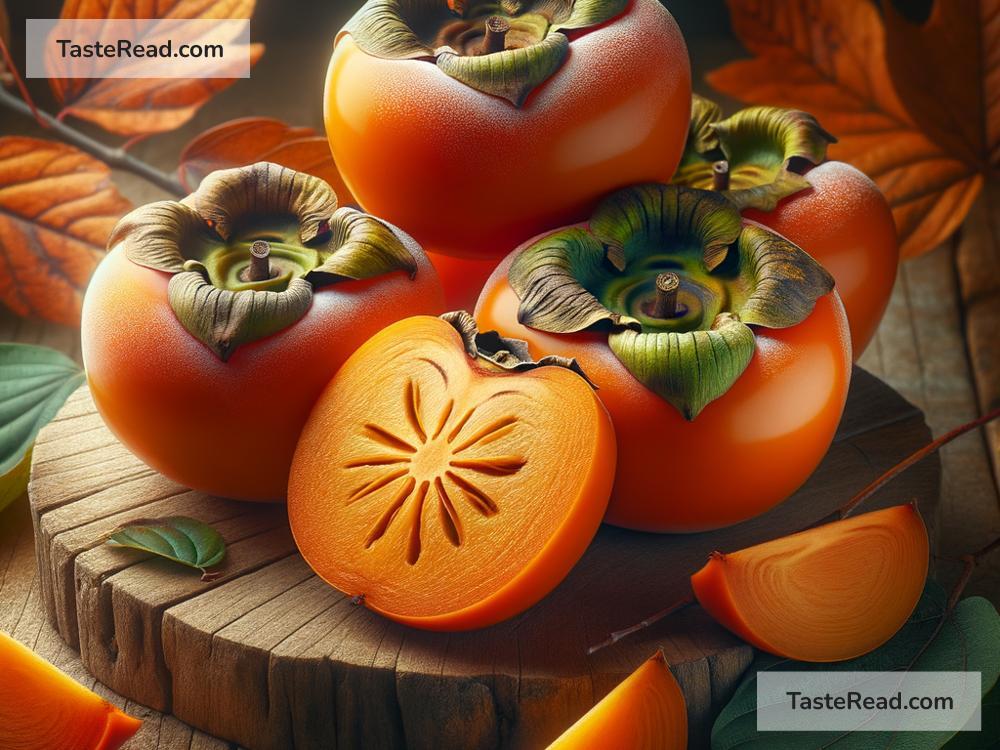The Role of Tannins in the Astringency of Fruits Like Persimmons
Have you ever bitten into a ripe-looking persimmon expecting sweetness, only to be met with a dry, puckering sensation in your mouth? If so, you’ve experienced a fruit’s astringency—an intense reaction that leaves your mouth feeling rough and dry. This distinct sensation is caused by something called tannins, natural compounds found in fruits like persimmons. But what exactly are tannins, and why do they create this unusual effect? Let’s explore the fascinating science behind tannins and their role in fruit astringency.
What Are Tannins?
Tannins are natural chemicals, or compounds, that belong to a group called polyphenols. They occur in many plants, including fruits, seeds, bark, and leaves. Plants produce tannins as a defense mechanism to protect themselves from predators like insects and animals. Tannins make parts of the plant taste bitter and unpleasant, discouraging animals from eating them before they’re ready to be consumed.
In fruits like persimmons, tannins are especially concentrated when the fruit is unripe. These compounds interact with proteins in your saliva, creating the dry and puckering feeling we associate with astringency. Essentially, tannins “bind” to the proteins in your mouth, making it harder for saliva to flow freely, which is why your mouth feels rough or dry.
Understanding Astringency
Astringency isn’t the same as bitterness, although the two sensations are often confused. Bitterness is a taste, like the sharp flavor of black coffee or dark chocolate. Astringency, on the other hand, is more of a physical sensation—a mouthfeel. It’s that drying, puckering experience that can leave your tongue and teeth feeling like sandpaper.
When you eat something high in tannins, such as an unripe persimmon, the tannins bind to proteins in your saliva and the soft tissues of your mouth. This binding process causes your saliva to lose its lubricating quality, creating the rough, tight feeling characteristic of astringency. It’s not necessarily unpleasant—many people enjoy foods and drinks with some level of astringency, such as tea, wine, or dark chocolate. But in fruits like persimmons, the effect can be overwhelming if the tannin levels are too high.
Persimmons: A Prime Example of Tannins at Work
Persimmons are one of the most famous examples of astringent fruits. There are two main types of persimmons: astringent varieties (like Hachiya) and non-astringent varieties (like Fuyu). Astringent persimmons are loaded with tannins when they’re unripe, making them almost inedible due to their extreme dryness and puckering effect. However, as the fruit ripens, the tannins break down, and the persimmon becomes sweet and enjoyable to eat.
If you’ve ever been tempted to eat a bright orange Hachiya persimmon before it’s fully soft and ripe, you likely regret it. Unripe astringent persimmons will make your mouth feel raw and unpleasant, a direct result of the high tannin levels. But once the fruit ripens, its texture softens, and the tannins lose their ability to bind to saliva proteins. This is why ripe persimmons taste deliciously sweet without any astringency.
Non-astringent persimmons, like the Fuyu variety, are a bit different. They naturally have lower levels of tannins, which means you can eat them while they are still firm without experiencing the same drying sensation. Non-astringent persimmons are easier to enjoy because they don’t require a long ripening process to become palatable.
Why Do Fruits Like Persimmons Have Tannins?
For fruits, tannins serve an important purpose. They act as a natural defense system to protect the fruit from being eaten before the seeds inside are mature enough to reproduce. When the fruit is unripe, tannins make it taste astringent and unpleasant, discouraging animals (and humans!) from eating it too soon. As the fruit ripens and the seeds are ready for dispersal, the tannins break down, allowing the fruit’s sweetness and flavor to shine through. At this point, animals are enticed to eat the fruit, spreading its seeds far and wide.
Tannins in Other Foods and Drinks
Persimmons aren’t the only foods where tannins play a noticeable role. Many common beverages, like wine and tea, contain tannins that contribute to their unique flavors and astringent qualities. In fact, the slight dryness you feel when drinking certain red wines or strong black teas comes from tannins.
Other fruits, such as pomegranates, cranberries, and unripe bananas, also contain tannins that create astringency. While tannins are often associated with bitterness or dryness, they’re not inherently bad. In some cases, a controlled astringency can enhance the complexity and enjoyment of certain foods and drinks.
How to Reduce Astringency in Fruits
If you love persimmons but want to avoid the unpleasantness of astringency, it’s all about timing and preparation. For astringent varieties like Hachiya, patience is key. Allow the fruit to fully ripen until it becomes soft and jelly-like. You can speed up the ripening process by storing unripe persimmons with apples or bananas, which release ethylene gas—a natural ripening agent. Once ripe, astringent persimmons are sweet and enjoyable, without the drying effects of tannins.
For non-astringent varieties like Fuyu, you can eat them while they’re firm, as their tannin levels are much lower.
Conclusion
Tannins play a fascinating and essential role in the natural world, creating astringency in fruits like persimmons to protect them until they’re ready to be eaten. While the dry, puckering sensation caused by tannins can be unpleasant in unripe fruit, it’s part of nature’s way of ensuring proper seed dispersal. By understanding how tannins work, you can learn to appreciate their role in food and savor fruits like persimmons at their sweetest and most delicious moments.


